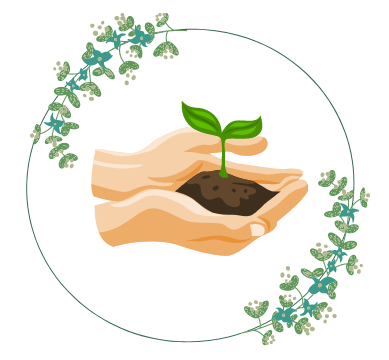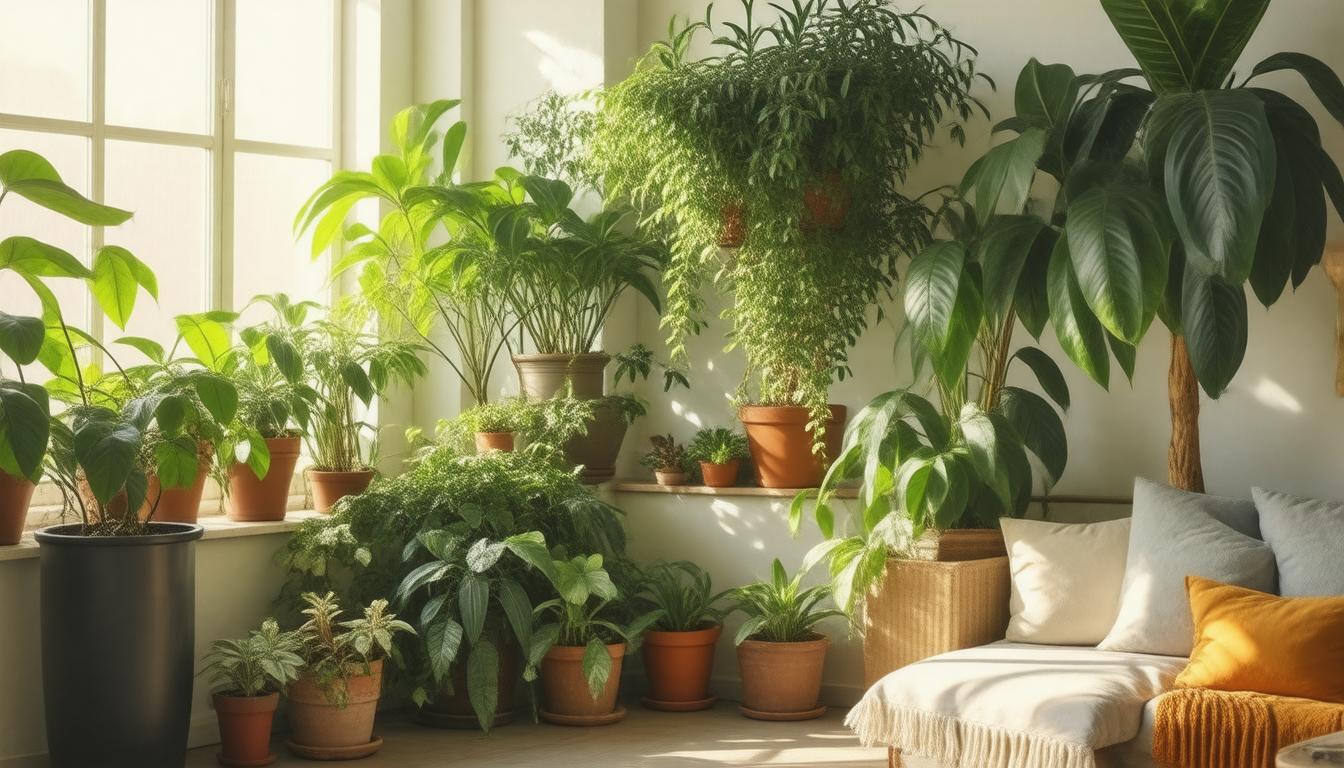If you’re looking to transform your living space into a green oasis, then our comprehensive Indoor Plant Survival Guide: 5 Essential Tips for Every Plant Lover is just what you need. Whether you’re a seasoned gardener or just starting out, understanding the fundamental needs of indoor plants can make all the difference in their growth and longevity. From the right lighting and watering practices to selecting soil and being aware of common pests, this guide covers everything you need to nurture your leafy companions. Let’s dig in!
Key Takeaways
- Understanding the specific needs of your indoor plants is crucial for their survival.
- Selecting the appropriate light conditions can significantly enhance your plants’ growth.
- Proper watering techniques, including knowing when and how much to water, are essential for healthy plants.
- Choosing the right soil and pot can prevent root rot and promote better drainage.
- Being vigilant about common pests and diseases will help in maintaining your plants’ health.
Understanding Your Plant’s Needs
Understanding your plant’s needs is the cornerstone of successfully cultivating indoor greenery. In the Indoor Plant Survival Guide: 5 Essential Tips for Every Plant Love, we delve into the key elements that can help your plants thrive in the comfort of your home. First and foremost, light is crucial; different plants require varying levels of sunlight, so assess whether your space provides sufficient natural light or if you need to supplement it with grow lights. Additionally, proper watering is vital; overwatering can lead to root rot while underwatering can cause wilting. It’s important to gauge the moisture level of your potting soil and adjust your watering schedule accordingly. Moreover, humidity plays a significant role in your plant’s health—most tropical plants flourish in higher humidity, so consider misting them or placing a humidifier nearby. Fertilizing your plants periodically with the right nutrients will also ensure they remain robust and vibrant. Lastly, be attentive to signs of stress; yellowing leaves or stunted growth can indicate that your plant isn’t happy. By following these tips outlined in the Indoor Plant Survival Guide: 5 Essential Tips for Every Plant Love, you can foster an environment where your plants not only survive but flourish.
The Right Light for Your Indoor Plants
When it comes to keeping your houseplants thriving, understanding the right light conditions is crucial. In this segment of our ‘Indoor Plant Survival Guide: 5 Essential Tips for Every Plant Lover,’ we delve into how different types of light affect plant health. Indoor plants typically require bright, indirect sunlight, but managing their light exposure can be tricky. For example, succulents and cacti want as much direct light as possible, while ferns and peace lilies thrive in lower light conditions. By assessing where you place your plants and how much natural light they receive throughout the day, you can create an ideal environment that encourages growth and vitality. Consider using grow lights if your space lacks sufficient sunlight, particularly during the darker months. Remember, each plant is unique, so don’t hesitate to adjust the location or lighting to meet their specific needs. This knowledge will not only enhance your plants’ beauty but will also ensure a rewarding indoor gardening experience as you become an expert in your indoor plant survival guide.
‘To plant a garden is to believe in tomorrow.’ – Audrey Hepburn
Watering Wisely: When and How Much
Watering wisely is a critical element in your Indoor Plant Survival Guide: 5 Essential Tips for Every Plant Lover. Understanding when to water your plants is just as important as knowing how much to water them. Overwatering is a common mistake that can lead to root rot and plant decline, while underwatering can cause your greenery to wilt and lose its vitality. A general rule of thumb is to check the top inch of soil; if it feels dry, it’s time to water. Additionally, ensure that you use pots with drainage holes to allow excess water to escape, promoting healthier roots. Different plants have varying water needs, so familiarize yourself with the specific requirements of each species in your care. By mastering the art of watering, you’ll ensure your indoor plants thrive, contributing to your overall indoor garden success.
Choosing the Right Soil and Pot
Choosing the right soil and pot is a critical step covered in the Indoor Plant Survival Guide: 5 Essential Tips for Every Plant Lover. First and foremost, the type of soil you select can greatly influence the overall health of your indoor plants. Standard potting soil is often too compact for many indoor species, leading to poor drainage and root rot. Instead, opt for a lightweight, well-aerated soil mix that enhances moisture retention while allowing excess water to escape. Additionally, choosing the appropriate pot is equally vital. Ensure that your pot has sufficient drainage holes to prevent water accumulation at the bottom. Consider materials such as terracotta, which is breathable and helps regulate soil moisture levels. By understanding how to select the right soil and pot, you set the foundation for successful indoor gardening, keeping your plants thriving and vibrant.
Common Pests and Diseases to Watch For
When it comes to indoor gardening, understanding common pests and diseases is crucial for ensuring your plants thrive. An effective Indoor Plant Survival Guide: 5 Essential Tips for Every Plant Lover would not be complete without addressing these potential threats. Common pests such as spider mites, aphids, and mealybugs can wreak havoc on your greenery, sucking the moisture and nutrients from your plants. It’s essential to regularly inspect your indoor plants for any signs of these pests, such as webbing or sticky residue. On the disease front, overwatering can lead to root rot, a condition that can kill your plants quickly. Fungal infections, identified by discolored spots on leaves, are also common culprits. Implementing preventative measures, such as good air circulation and proper watering techniques, is key to maintaining a healthy indoor ecosystem. By being vigilant and responsive, you can effectively protect your plants from these adversities and enjoy the beauty of your indoor garden for years to come.
Nurturing and Maintaining Plant Health
Keeping your indoor greenery thriving can be a rewarding endeavor, especially with an Indoor Plant Survival Guide: 5 Essential Tips for Every Plant Lover. First and foremost, understanding the specific light requirements of your plants is crucial; placing them in the right spot not only enhances their growth but also reduces the likelihood of disease. Secondly, watering practices should be adjusted according to each plant’s needs—too much or too little water can lead to root rot or dehydration. Additionally, providing adequate humidity is often overlooked; many tropical plants flourish in a more humid environment, so consider grouping plants together or using a humidifier. Fourth, regularly inspecting for pests can save your plants from major infestations; always act swiftly at the first sign of trouble. Lastly, incorporating the right fertilizer will provide essential nutrients that can help your plants reach their fullest potential. By leveraging these essential tips, you can ensure the health and longevity of your indoor plants, making your home a vibrant oasis.
Frequently Asked Questions
What are the key needs of an indoor plant?
Indoor plants require a balance of light, water, temperature, humidity, and nutrients to thrive. Understanding the specific needs of your plants, including their preferred light levels and watering schedules, is crucial for their survival.
How can I determine the right amount of light for my indoor plants?
Observe the natural light in your home throughout the day. Identify south-facing windows for bright light, north-facing for low light, and adjust your plant placements accordingly. Some plants may thrive in direct sunlight, while others prefer indirect light.
What is the best way to water indoor plants?
Watering should be done when the top inch of soil feels dry to the touch. Thoroughly water until it drains from the bottom of the pot and ensure that the pot has drainage holes. Avoid overwatering, as it can lead to root rot.
How do I choose the right soil and pot for my plants?
Select a pot that has drainage holes to prevent water from accumulating. Choose a potting mix suited for your specific plant type; for instance, succulent mixes that drain quickly or heavier mixes that retain moisture for ferns.
What are some common pests and diseases to look out for in indoor plants?
Watch for signs of pests like spider mites, aphids, and mealybugs. Common diseases include root rot and leaf spot. Maintaining good air circulation, proper watering, and regularly checking your plants can help prevent these issues.




